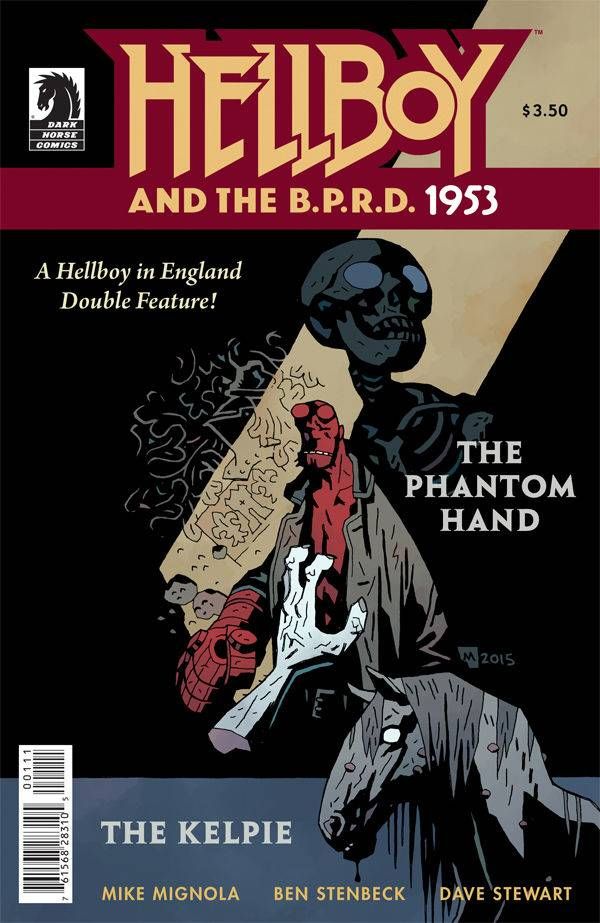Written by "Hellboy" creator Mike Mignola and drawn by Ben Stenbeck, "Hellboy and the B. P. R. D.: 1953 - The Phantom Hand & the Kelpie" is less a standalone one-shot and more of a slim anthology collection. Twenty-two pages of story delve into the past and provide some character interaction between Hellboy, Harry Middleton and Trevor Bruttenholm. The trio actively encounters one threat in the opening tale, while the backup story is more of an exploration of Middleton and Bruttenholm's shared history.
Seventeen pages are dedicated to "The Phantom Hand," as Hellboy accompanies Harry Middleton and Trevor Bruttenholm to St. Albans, England. This story is a tight little chestnut of Hellboy's adventures and could easily serve as a sampler for what readers might be able to expect in additional tales. Mignola uses the threat of the Phantom Hand to provide a case for Middleton and Bruttenholm to perform a character study in front of the readers. The end result informs readers of all three personalities at play while coaxing them into forming a certain opinion.
The second tale, "The Kelpie," limits Hellboy to four words and four panels in a five-page tale. Rewinding back to 1935, the story is a tense jaunt revolving around the loss of a close comrade. This tale adds depth to the bond between Bruttenholm and Middleton and gives readers a sense of their pre-Hellboy adventures, reminding readers that darkness existed prior to Hellboy's appearance. Readers will surely empathize with the duo, just as they undoubtedly cheer Hellboy on in the first portion of this comic.
Stenbeck's art is reminiscent of early Mignola, with heavy shadows and dynamic figures roaming through the panels. When detail suits the tale, Stenbeck provides plenty of it, but -- like Mignola -- Stenbeck's artwork is as much about the lines not drawn as it is the lines on the page. The weighty shadows define the space and add eerie mystery to the comic, particularly "The Phantom Hand" installment. In a manor lit by fireplace, the shadows seem spot on, harsh and threatening, bringing cold and despair with them. Dave Stewart's colors find the right temperatures to occasionally challenge the shadows, but more often than not strike a balance with the shadows, holding them at bay and giving them kinetic energy. Stewart minimizes the effects, using them more for texture and surface appearance rather than simply trying to add pomp and flash. Like Stenbeck's art, Stewart knows when and how to deliver more by applying less. Clem Robins' letters add a nice polish to the piece. The letterer's selection for caption box tones keeps the mystery present and enhances the tale, never distracting from the other visuals on the page.
On first blush, "Hellboy and the B. P. R. D.: 1953 - The Phantom Hand & the Kelpie" might seem like a collection of inventory tales, clearing out the drawers before ending the legend, but Mignola clearly sees the need for these stories, slotted between other adventures. Mignola avoids making the stories feel forced or unnecessary. These are tales some might find boring while others can't get enough, but there is absolutely no denying that "Hellboy and the B. P. R. D.: 1953 - The Phantom Hand & the Kelpie" adds clarity to the personalities of Middleton and Bruttenholm and their mission.

